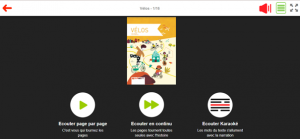
According to La Fédération Française des Dys, between 6 and 8% of people in France are dyslexic, although there are no studies to confirm this figure. Dyslexia can be detected during the first years of primary school: a dyslexic child has difficulty reading, associating letters and sounds, and understanding a text, both in terms of content and form. For a dyslexic child, reading becomes a difficult ordeal to overcome. What can be done to make a dyslexic child want to read? What can be done to develop a taste for reading in dyslexic children?
Dyslexia and reading: is it possible?
Dyslexia is a disorder that can take different forms and which does not allow the child to read with ease and fluency. They will « stumble » over certain words, invert letters and sounds, and take longer to understand a text. They may then become discouraged, devalue themselves, and give up reading. However, this reading and spelling disorder should not be a hindrance to children who are still learning to read and write. A dyslexic child also has the right to access books and to develop a taste for reading. To do this, it is important to choose books carefully or opt for audiobooks.
How to choose a book for a dyslexic child?
If the theme is an essential criterion for a child to open and close the book only at the end of the story, for a dyslexic child the form of the text is equally important. By form, we mean the layout: line spacing, choice and size of font, page background, spacing between words, etc. It helps to focus the child’s eye and avoid visual distraction or constant eye movement. Therefore, choose a book with spaced and airy text, short lines, wider spacing, and a larger font size. Children with dyslexia, who are still learning how to read, are sensitive to the whole layout. It helps them considerably to read and decipher the text.
The form of the text is therefore essential, but the most important thing should not be forgotten: the book should interest the child. For example, be careful not to offer the child content that is too simple, too « babyish » and not at all age-appropriate to facilitate deciphering. A dyslexic child does not suffer from mental retardation!
Beyond the form, prefer a book that deals with one of the child’s interests (animals, dancing, horse riding, science…): they will be more motivated to read if the theme interests them! Encourage reading for pleasure so that dyslexic children are better prepared to read books for school. This will enhance their self-esteem and help them (re)acquire a taste for reading.
Storyplay’r offers two advantages in this respect:
– Text display adaptations are available for all books in the library, regardless of the subject matter;
– An audio version is available for all the books, allowing, at certain times, to discover longer and more vocabulary-rich books without having to decipher them yourself!
Read too: Which font for dyslexic children?
Audiobooks: an alternative for dyslexic children
Reading media are becoming increasingly diverse: paper books, e-readers, audiobooks, digital books, etc., thus encouraging the development of and access to reading. Audiobooks are an interesting solution for dyslexic people because they allow them to discover content with less effort and, in a way, to bypass the disorder. Audiobooks also develop the imagination. Moreover, semantic understanding is the same whether the reader reads or listens. Audiobooks are like an aid for dyslexics: a dyslexic child will find it easier to get through the reading and understand the story if the book is read. They also allow a dyslexic child to take a further step towards independence. This will give the child pride and pleasure and will undoubtedly make them want to continue reading.
How does Storyplay’r work for dyslexic children?
Storyplay’r is designed for everyone and can be adapted to each individual. In order to help all children, including dyslexic children or those with reading difficulties, to develop their love of reading, we offer more than 1,800 children’s books, in French and foreign languages, all of which, without exception, contain numerous reading learning assistance:
 The display of the text next to each page of the book with the possibility of changing the background color, font, and size of the text, increasing the line spacing, and bringing up a cursor to read line by line (as a child would with a ruler).
The display of the text next to each page of the book with the possibility of changing the background color, font, and size of the text, increasing the line spacing, and bringing up a cursor to read line by line (as a child would with a ruler).
 Pronunciation aids using speech synthesis to listen to the pronunciation of a word, group of words, or whole sentence.
Pronunciation aids using speech synthesis to listen to the pronunciation of a word, group of words, or whole sentence.
Each of the 1,800 French books is accompanied by an audio version. The child can build up an audio library and listen to the story told by one of our professional storytellers page after page. They can also choose the « reverse karaoke » option, which highlights groups of words as they are spoken by the storyteller, in order to coordinate the spoken and written word. Finally, they can change the pace of reading, in particular slowing it down so that the story is read more slowly, and thus adapted to their comprehension skills.
Read too: Storyplay’r: a reading assistance for dyslexic children

Happy reading on Storyplay’r!













